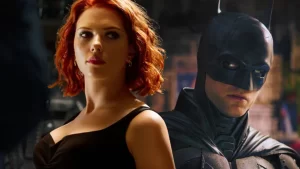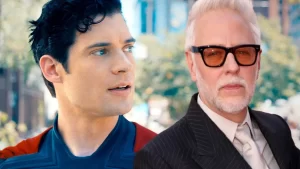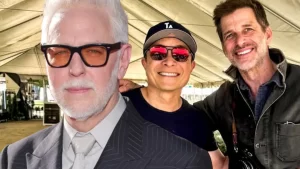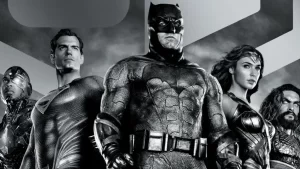The Power of Showing over Telling
A Film Review of Dunkirk
Christopher Nolan is one of the best directors in the film industry today for several reasons that cannot be fully explored in a single review, save for touching upon one: he understands and respects the process of composing a screen story with passion. A director’s process is unique and the legacy he or she builds is a direct result of their final cuts. This is why some directors develop reputations for being able to capture action well, or perhaps are more comfortable doing comedies, or particularly proficient with showcasing explosions or maybe they are just really good at extracting intense performances from his or her cast. What makes a Chris Nolan film unique is not an adherence to a niche, but rather, a dedication to displaying as much of the drama on the screen as possible without requiring dialogue, titles or exposition to translate the visual experience to an audience. There’s a reason why a picture is worth a thousand words and the imagery within Dunkirk evokes the kind of emotions that push an audience to understand this moment in history a bit more and question the reasons why our species is so hell bent on war.
Dunkirkis not what I would describe as a classic war film because it doesn’t do the kind of things we’ve seen in Patton, Full Metal Jacket or Saving Private Ryan. First of all, dialogue in general is extremely limited. It seems a bit jarring at first because the audience is searching for a character’s perspective to latch on to in order to understand what is going on and dialogue makes this easier. Technically, that character is Tommy played by Fionn Whitehead, but immediate circumstances prevent him from chirping about all the chaos he’s just been through leaving the audience to experience his danger moment to moment and connect the dots for itself. Second, the A-listers in the cast are relegated to support roles as opposed to the customary protagonists we expect will achieve victory somehow. Tom Hardy, Kenneth Branagh and Cillian Murphy are all excellent in the small parts they play, but their characters never elevate above that of role-players meant to show specific perspectives of soldiers involved with the mass evacuation. Third, this film is not concerned with anything outside of the Dunkirk evacuation itself which means no global, political perspective on this situation, how it fits into the overall conflict of WWII or the reasons for the original mission that put so many troops there in the first place. This laser focus by the plot sacrifices contextual observation to highlight multiple examples of lethal exposure for the troops on the beach and the utter futility in fighting back.
What the audience gets in return is an experience that delivers the sights, sounds and desperation of warfare from multiple points of view from characters on the land, sea and air. Massive set pieces involving destroyers and other naval vessels getting bombed, capsizing and ultimately sinking gives the viewer an appreciation for the scale of destruction and loss of life due to the lack of appropriate military support for an operation of this magnitude. The shrieking of enemy fighters and bombers diving onto the beach escalates the adrenaline as we bear witness to the impending doom for troops that have nowhere to take cover. Every click, pop, rattle, boom and grind of just about every form of ordinance being used to shred human lives rips through one’s auditory range to the point that all the Foley becomes its own soundtrack at moments. The active framework and angles used to capture dogfights in the air infuse the overall action with dynamic movement as well as providing a bird’s eye perspective on all the death and destruction happening below. Dunkirk may not be the war film you are used to, but it is a war film through and through featuring danger, suspense, dread and anxiety.
|
Action Style |
Combat action is relegated to a bit on the ground showing some sporadic ballistics and the lion’s share in the sky with some excellent dog-fighting. Destruction action is what the sea and beaches are for featuring a multitude of explosive impacts sending bodies into the air and into the drink. The lulls in the action can be a bit off-putting. |
4/6 |
|
Action Frame |
Great cinematography by Hoyte Van Hoytema who found effective ways to get cameras on planes to capture those dogfights and cameras in the water to capture those sinking ships. Even better was the variety of distance featured in the capturing of the action from the super close all the way out to the super wide. |
4/5 |
|
Lead Performance |
The technical lead is Tommy played by Fionn Whitehead who is a newcomer to the business and the audience’s tour guide to the escape from Dunkirk. He does an adequate job at being rattled by the chaos all around him and he does fairly well with the few dialogue scenes he has demonstrating an ability to sell tension in high stress situations. However, a considerable lack of character development works against him and his contributions never elevate beyond the victim of circumstance. |
3/6 |
|
Supporting Performance |
Much more compelling in comparison to the “leads” because they have more lines and more action than getting shot at and ducking and covering. Tom Hardy is an absolute boss. Mark Rylance’s Mr. Dawson is the heart and soul of this production. |
5/5 |
|
Music |
Hans Zimmer is to cinematic orchestrations what Chris Nolan is to Hollywood filmmaking. Zimmer’s musical tracks are as haunting and alarming as the sounds of death and destruction all around. They are all but interchangeable. |
6/6 |
|
Sound F/X |
You can give Dunkirk the Academy awards for best sound editing, mixing/composition right now. No arguments. |
5/5 |
“Moving” = 27/33
|
Digital F/X |
Nolan prefers his effects to be practical, but when it’s just too impossible to create, he’ll turn to digital and they are effective enough during aerial combat sequences especially when planes get shot out of the sky and crash. Unfortunately, these visual effects are limited by maintaining the realism of the action so they simply don’t have the same impact as content that is more fantastic in nature. |
3/6 |
|
Special F/X |
Set pieces, bullet squibs, sinking ships, explosives on the beach and all sorts of underwater set configurations sell the visceral immediacy of the danger troops on the ground probably experienced at Dunkirk. |
5/5 |
|
Costumes |
Authentic, unimposing, plain, yet effective. |
4/6 |
|
Hair & Makeup |
Good stuff happening here what with all the troops constantly going to ground and jumping off ships. I loved seeing all the oil that drenched soldiers swimming to escape from their sinking ships that obviously leaked into the ocean when they were bombed. |
5/5 |
|
Exteriors |
This whole film was shot outdoors on location at Dunkirk and you can’t get much better than the real place, can you? |
6/6 |
|
Interiors |
Not a ton of interior design being featured other than the interiors of ships which were adequately dressed, but were filled with wall to wall extras rather than props. |
3/5 |
“Picture” = 26/33
|
Hook |
British and French troops are surrounded on all sides by the Germans with nowhere to escape but the perilous ocean and no ships to ride. |
3/4 |
|
Conflict |
Aerial combat is the only stage where the protagonists have an opportunity to “fight back.” Avoiding death from above without the appropriate equipment is a heck of a challenge. |
3/4 |
|
Resolution |
Despite the overall loss of life and military screw ups, the operation is a success and a magical moment of bittersweet victory shines through with Tom Hardy’s character during the climax. |
4/4 |
|
Dialogue |
Serviceable for the leads, dramatic and effective for supporting characters. |
4/6 |
|
Exposition |
Those who aren’t familiar with this particular moment in history may start off at a loss because this film jumps right into the fray with precious little setup of any variety. |
2/5 |
|
Character Uniqueness |
Heroes of war are made after the fact. WWII was fought by soldiers and every kind was featured: those committed to discipline and duty, those who did anything to survive, those who made bad decisions and those whose spirits were crushed. These characters were more unique in their collective variety than as individuals. |
4/6 |
|
Character Relatability |
We’d all love to aspire to Farrier’s heroism in dire circumstances, but reality is we’d probably just try to hang on for dear life like Tommy. Heck, I’d hope to aspire to Mr. Dawson’s heroism as a mere civilian doing whatever he could to help the cause. |
4/5 |
“Story” = 24/34
Overall MPS Rating: 77/100
Dunkirk is the first non-indy contender for Oscar gold this year. Two things may work against it in terms of receiving the recognition it deserves. One, being released now, far ahead of the other award season dramas towards the end of the year may demonstrate voters’ amnesia later down the line and two; this film doesn’t feature acting performances as the engine for the overall drama. The proficiency and scope of this production combined with the power of the story should be more than enough for a nomination for best film and its technical excellence should yield victories in those respective categories. Whether this film wins the ultimate prize remains to be seen, but Dunkirk is worthy both of it and your attention at your local cinema. If you have the means, check this out in IMAX because the big screen gives you a big perspective on historic warfare.







